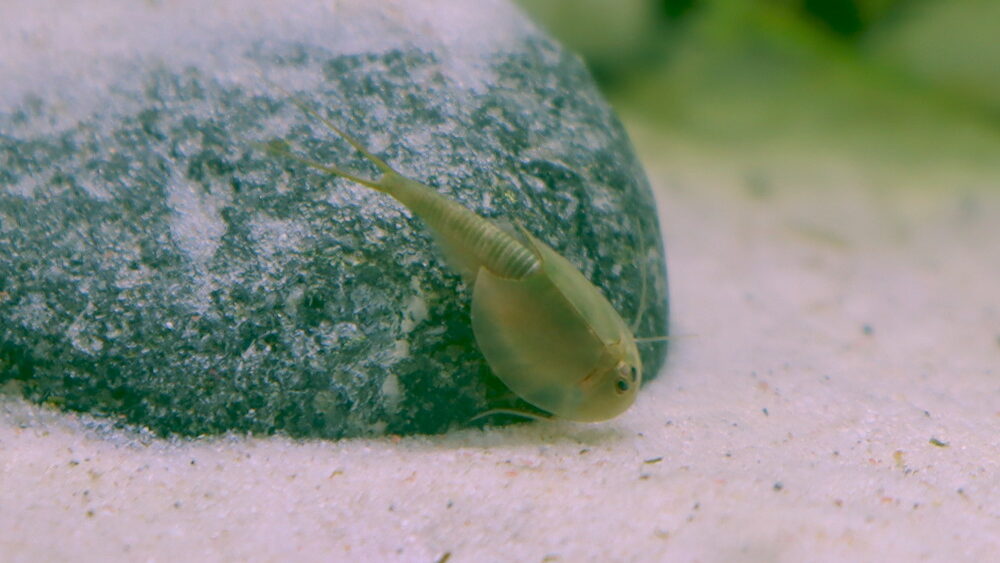Guide
Can Triops get sick?
Unfortunately, as a Triops breeder you often experience situations in which the Triops either do not hatch or succumb to an early death after a short time. This can have various causes, but as a breeder you can have a positive influence on them. But what about Triops diseases? Can Triops get sick? It is important to note that there is currently only limited knowledge about Triops diseases. It is of great importance to emphasise that I am not a veterinarian and therefore cannot take any responsibility for what is said here from a medical perspective. In this blog post I answer the question whether Triops can get sick.

Common Triops diseases
In gill breathers, a parasite infestation of the gill lobes is often caused by small worms. Using a magnifying glass, tiny white lines can be seen on the body. These are due to swelling of the feet as well as a conspicuous bright red colouration of the affected areas. To prevent such an infestation, it is recommended to clean the substrate thoroughly and to clean the aquarium regularly to minimise the risk of infecting other inhabitants.
Triops have an extremely fast metabolism, which means that ingested food is excreted within a few minutes. This would be comparable to the human need to go to the toilet immediately after every meal. This rapid digestion often leads to digestive problems in the primeval crabs, which are often caused by faulty moulting.
One of the common diseases in Triops is a fungal infection, which is noticeable by tiny spots on the body. These contagious fungi gradually spread and eventually cover the entire body of the Triops. If a Triops is affected by fungi, it is advisable to isolate it immediately and carry out an extensive water change in the aquarium. Fungicides suitable for shrimps and crabs can be used as a countermeasure.
Skinning problems and bleeding
The moulting process can sometimes cause problems, and especially weakly aged animals often do not survive the moult. As a breeder, you should by no means help with the moult and try to free the Triops from the skin. This can lead to fatal bruising. A common problem with moulting is too much animal food. Cholesterol is used in the body to produce the hormone ecdysone, which is responsible for moulting. Animal food contains cholesterol and if too much of it is consumed in the diet, it causes increased production of the moulting hormone and too rapid a moult. To minimise Triops diseases such as moulting problems, attention should be paid to water values in addition to diet.
It is easy for Triops to bump into something and get a bruise. A blood blister forms on the body, which can be seen as a red spot. Triops can also injure themselves on sharp edges such as stones and bleed to death. Because blood clotting in the water is additionally impeded, the animals unfortunately die within a very short time. In most cases, keepers do not have the time to react. In addition, the blood attracts other aquarium inhabitants.